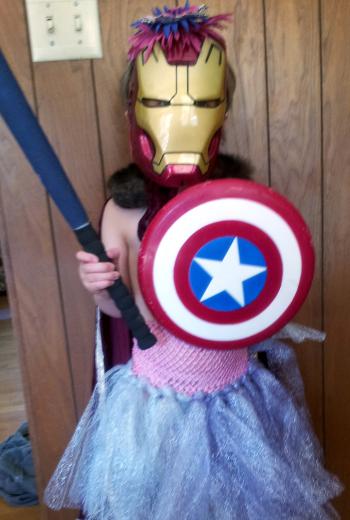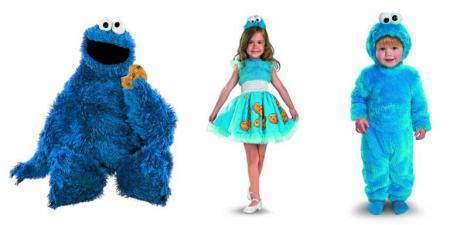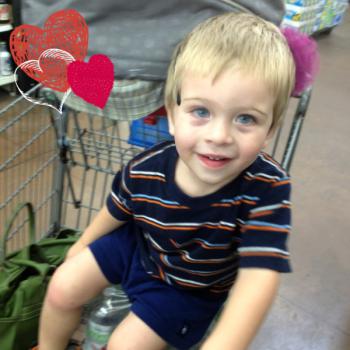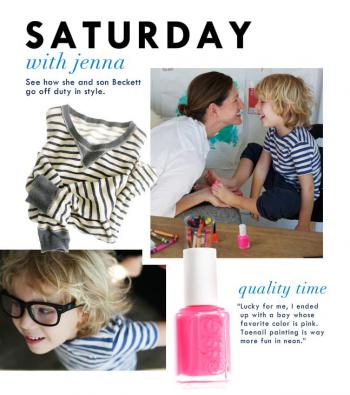Serendip is an independent site partnering with faculty at multiple colleges and universities around the world. Happy exploring!
You Are You: Looking at the Sexism and Intolerance of Gender Non-Conforming Children

 The photograph to the left features a child prepared to celebrate Halloween, clad in a hybrid superhero-princess costume, titled “Iron Flower Captain Bat Man” (Levi Sable 2013). At first glance, we praise and admire both the creativity and courage of the young girl, and her parents for that matter, for going against the norm of dressing as strictly feminine archetypes. But the moment we learn that the child is actually a young boy in a gender-clashed costume, our perceptions change entirely towards confusion and concern. Is something wrong with him? Is he gay? Halloween is intended to be a joyous time to become a character that you normally couldn’t be. Why is it that a boy and a girl in the same exact costume are interpreted so differently? Embedded in our culture is an attitude that a masculine female is strong, empowered, and independent, while a feminine male is weak, sensitive, and queer.
The photograph to the left features a child prepared to celebrate Halloween, clad in a hybrid superhero-princess costume, titled “Iron Flower Captain Bat Man” (Levi Sable 2013). At first glance, we praise and admire both the creativity and courage of the young girl, and her parents for that matter, for going against the norm of dressing as strictly feminine archetypes. But the moment we learn that the child is actually a young boy in a gender-clashed costume, our perceptions change entirely towards confusion and concern. Is something wrong with him? Is he gay? Halloween is intended to be a joyous time to become a character that you normally couldn’t be. Why is it that a boy and a girl in the same exact costume are interpreted so differently? Embedded in our culture is an attitude that a masculine female is strong, empowered, and independent, while a feminine male is weak, sensitive, and queer.
This social distinction against feminine males along with blatant sexism has created a positive feedback loop that is influencing the types of socially accepted Halloween costumes offered for boys and girls. Essentially, Halloween has become a powerful force that is unnecessarily establishing boxed gender definitions, which are in turn encouraging overly gendered costumes. For example, costume companies present little girls with hyper-feminine outfits, in which the foundation of every ensemble is an above the knee, flouncy dress. You can observe this in a comparison between the two “boy” and “girl” Cookie Monster costumes (in the image below), both of which are for 2-4 year-olds. Immediately, you will notice a major visual disparity between the cutesy dress and the fuzzy bodysuit that are
both attempting to imitate the same cookie-loving character.

On VillageQ.com, an online support community for allies and friends of queer families, one author testified against the oversexualization of the “girl” costume, noted that the boy’s version is both gender-neutral and absolutely age-appropriate, and ultimately questioned why a separate “girl” costume exists at all (Where are the Non-Sexy Girl Costumes). Although the sexualization and feminization of young female costumes is overwhelming and at times disturbing when compared to male counterparts, gender-neutral costumes may not be the perfect solution for allowing child gender fluidity. They will not allow for boys to wear categorically “girly” items and still find acceptance, although society has been more desensitized of girls dressing in “manly” elements. We need to stop seeing gender as a restrictive force that subjugates human beings into boxes, and instead create a desensitized environmental that is accepting of gender nonconformity and still provides children the opportunity for gender expression fluidity.

During the summer of 2013, two-year-old Dexter, a batman-loving toddler whose favorite color is pink, wore a magenta lace flower headband on a shopping trip to Wal-Mart, as seen in the photo above. His mother, Katie Vytoriah, decided to let him wear it out of the house because “I saw him getting ready to fight, so I left him to it. Who was he hurting?” (Vytoriah). While many onlookers cooed at Dexter (see image on right), two teenage girls giggled and asked if Dexter was a boy or a girl. Just after Mrs. Vytoriah replied that he was a boy, a booming voice resonated down the isle, “THAT’S A BOY?!?!” A large man with a bushy beard and camouflage shirt approached the cart that Dexter was sitting in, grabbed the headband off of Dexter’s head, and threw it to the bottom of the cart. He then proceeded to exclaim, “You’ll thank me later, little man!” as he cuffed Dexter on the head. Dexter contested “NO!” and Mrs. Vytoriah stepped forward to reprimand the man for touching her son. Mrs. Vytoriah recalls that the men then “Looked at Dexter with disgust and said ‘Your son is a fucking faggot.’ He then started sauntering out, but not before he threw over his shoulder ‘He’ll get shot for it one day!’” (Vytoriah).
Katie Vytoriah’s blog post about her awful encounter over her son’s gender representation sparked major Internet attention and frustration, especially because Dexter was only two year old. Many were disgusted by the bigotry that was shown through usage of a derogatory slang, the suggestion that Dexter and all gender-queer humans will be physically harmed, and the open intolerance for a toddler’s gender non-conformity. Her story is a primary example of how public understanding of what gender “should” look like abhors any self-expression that lies outside of two boxes- masculine men and feminine women.

Back in 2011, a gender non-conformity controversy hit headlines when the most recent J Crew catalogue featured Jenna Lyons, the company’s president and creative director, pictured with her son, Beckett, and his hot pink nail polish. The caption of their photo (pictured left) read “Lucky for me I ended up with a boy whose favorite color is pink, Toenail painting is so much more fun in neon.” The catalogue ushered in a frenzy of both supportive and disgusted commentary. One article in the LA Times stated, “To some the photo depicts a sweet moment between a stylish mom and her equally stylish son. To others, however, it reads as a questionable endorsement of parental support of transgendered or gender-neutral children,” (Netburn). Showing support and visibility of such a taboo topic of gender non-conforming boys, brought the questioning of gender definitions to the public dialogue. Fox News posted an interesting article and although it did not present support for the J Crew advertisement it did draw attention to our human influence on a child’s gender exploration: “Well, how about the fact that encouraging the choosing of gender identity, rather than suggesting our children become comfortable with the ones that they got at birth, can throw our species into real psychological turmoil…” contested author/psychiatrist, Keith Ablow (Ablow). Most of the arguments presented in response to the J Crew controversy were rooted in discrepancies between gender definitions. Many people are uncomfortable when children, especially young boys, toy with gender self-expression because it threatens the sturdy institution that those people have relied on to define themselves and their own children. But can that structure be rebuilt? Is it possible to accept a more “blurry” and abstract definition of gender that provides more leeway for fluidity, adaptation, and creativity?
When babies are brought into the world, they are greeted by false assertions of the innate sex differences between the brains of males and females. These misbeliefs fuel the inception of unequal and restrictive treatment of baby boys and girls that continue on through adolescence and ultimately influence the future behavior of the child. Lisa Eliot, author of Pink Brain, Blue Brain: How Small Differences Grow Into Troublesome Gap, provides counterarguments that describe how we presume that male and female infants are neurologically different, therefore we treat the babies differently because of these misled presumptions, which fundamentally encourage a gendered type of behavior in the child’s future. In one study, scientists clothed infants in gender-neutral apparel and misled adults about their assigned-at-birth sex. Adults who believed that they were observing “boys” (who were actually girls) detected more anger, distress, and aggression compared to the adults who watched “girls” (who were actually boys) and noted happier and socially engaging qualities (Begly). “Adults perceive baby boys and girls differently, seeing identical behavior through a gender-tinted lens,” explains Eliot (Qtd in Begley). Our predispositions about the existence of pink brains and blue brains, which rely on scientific data that is often outdated, insufficient, or disproven, are essentially what creates such rigid treatment and observations of gender, as well as the social stigma of children to stray from gender “norms”. We need to change the overall mentality and action about gender towards babies and children to be more inclusive and open in order to have a more positive impact on the rest of their lives.
Since gender has recently entered both the political and social agenda and is heading towards more acceptance and tolerance, now is the time to initiate change and revolutionize the institutional system that has long oppressed gender variance, non-conformity, creativity, and exploration. Many have entered a quest to create gender-neutral environments for both children and adults, but this is not enough. To create openness we should consider not try to ignore gender’s existence, but embrace its variety and exploratory nature. A “gender-neutral” preschool in Sweden, draws focus on providing both masculine and feminine opportunities for any student to try out. For example, the educational institution provides all the typical toys that you’d find at any nursery but presents them side-by-side in a manner than encourages all students to utilize any toy that sparks their fancy instead of segregating the toys based on gender and therefore influencing a social stigmatized difference between two categories (Hebblethwaite). Many parents have begun disguising the gender of their newborns by dressing them in both masculine and feminine clothing, with the goal of eliminating any gender-specific treatment towards their child. With the continued increase in visibility, education, and opportunity for bold children, empowered parents, and mindful citizens, we have the power to broaden the definitions of gender and eliminate the stigma against feminine boys and any other child that strays from our institutionalized interpretations.
Works Cited:
Ablow, Keith. "J. Crew Plants the Seeds for Gender Identity." Fox News. 11 Apr. 2011. FOX News Network. <http://www.foxnews.com/health/2011/04/11/j-crew-plants-seeds-gender-identity/>.
Begley, Sharon. "Pink Brain, Blue Brain." Why Parents May Cause Gender Differences in Kids. 3 Sept. 2009. NewsWeek. <http://mag.newsweek.com/2009/09/02/pink-brain-blue-brain.html>.
Claire. "Where are the non-sexy girl Halloween costumes?" Web log post. Village Q. 25 Oct. 2013. <http://www.villageq.com/2013/10/25/non-sexy-girl-halloween-costumes/>.
Hebblethwaite, Cordelia. "Sweden's 'gender-neutral' pre-school." BBC News. 07 July 2011. BBC. <http://www.bbc.co.uk/news/world-europe-14038419>.
Netburn, Deborah. "All the Rage." [Updated] J. Crew and Jenna Lyons' pink toenail controversy. 23 Apr. 2011. Los Angeles Times. <http://latimesblogs.latimes.com/alltherage/2011/04/j-crew-and-jenna-lyons-pink-toenail-controversy.html?cid=6a00d8341c630a53ef01538dd893a7970b>.
Sable, Levi. "Never Forget the Nail Polish: Queering Up the Costume Asile." Weblog post. Village Q. 25 Oct. 2013. <http://www.villageq.com/2013/10/25/never-forget-nail-polish-queering-costume-asile/>.
Vyktoriah, Katie. "Getting Political." Web log post. A Mother Thing. 30 July 2013. <http://www.amotherthing.com/2013/07/getting-political/>.



Comments
Your discussion of gender
Your discussion of gender neutral clothing and the first picture made me think back to the Women's History class I took last year. We discussed that the reason that it is socially acceptable for women to wear men's clothing but not for men to wear women's clothing (and same for younger girls and boys) rides on the very strong feeling that male is better than female (unfortunately I can't explain this without using the binary). So, when women wear male clothing, it is ok because they are "aspiring" to masculinity. But because of the male domination, it simply does not make sense that a man would want to wear female clothing, because being female is worse. I think that an important step to the changes you discuss is getting rid of the assumption that male>female. But that is an unconscious feeling, and I think that has to do with the whole thing of humans learning gender expectations from the time we are babies. Of course the clothing example extends to something like telling a little boy he shouldn't play with a barbie (or wear a pink headband) but being fine with a little girl playing with a truck.
PS I read some of Pink Brain, Blue Brain too for my first web event and it was so interesting!
It is so crazy how society
It is so crazy how society has manipulated me to think, before reading your paper, when i looked at the first picture, i thought "aw that little kid is so cute" assuming it was a little girl, and then I was like "wait, what if its a boy?" and after, for a quick second I thought it wasn't so cute anymore. Damn society! It is such a shame that we have these ideas of what is feminine and what is masculine, especailly when thinking about Halloween costumes. When thinking back on my own childhood, i realized that my mom often bought me gender-neutral costumes (and everyday clothing) , like a firefighter costume or dinasour costume, which i now thank her for. i hope that socierty can move towards acceptance of all gender identities, mixed gender identities and especially towards innocent children.
Gender clashing (?)
Piper--
something about your projects calls up my family pictures. Last month we were talking on-line about how every representation is always both a revealing and an uncovering, and I laid a couple of pictures of my own alongside yours. This month your discussion of “gender-clashing costumes” put me in mind of my granddaughter,
worn out from being a supermanballerina. For her, aged two, there is no clash in her costume; it’s the categories imposed by adults that make for the confusion….
You have lots of striking images, and a couple of controversial stories to tell, in developing your claim that we need a “desensitized environmental that is accepting of gender nonconformity and still provides children the opportunity for gender expression fluidity.” But I’d like you to dig a little deeper to think about what the barriers are to such an environment: Why are “we” so “uncomfortable when children, especially young boys, toy with gender self-expression”? What exactly is “the sturdy institution that people rely on to define themselves and their children”—and why do they/we need it? What exactly (or complexly) is the (biological, psychological, social, political) resistance to “a more ‘blurry’ and abstract definition of gender that provides more leeway for fluidity, adaptation, and creativity?” What prevents us from “embracing its variety and exploratory nature”?
I’ve had to put together a somewhat “random” writing group for you: ari and Polly also wrote about different forms of intolerance, and I’m hoping y’all might find some related areas to talk about; so read their papers, please, and come to class ready to discuss them...